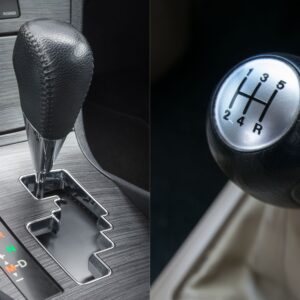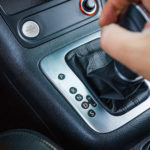The average price of used cars dropped 10% over the last year, according to Consumer Reports. Prices of vehicles that are 8-13 years old are down 18%, while models that are 4-7 years old are down 19%.
In short, it’s a good time to consider second-hand cars when in the market for a daily driver. However, you should still be wary when checking out used cars, especially manuals. Some of them might have gone through the wringer and need careful examination.
Issues to Look for When Buying a Used Manual Vehicle

Used cars aren’t perfect. Depending on their age and use, they might have parts that are not up to scratch, so be thorough when shopping for one. Some problems to keep an eye on when buying a used manual vehicle include transmission leaks, a slipping or sticking clutch, and gear shifting problems, among others.
Transmission Leaks
Leaks in the transmission can be difficult to notice because there isn’t a warning light to tell you when a manual transmission is low on lubricant, and there is no dipstick. But the more lubricant a manual transmission or transaxle loses, the more damage it does, beginning with bearings and extending to the gears. A manual transmission can be destroyed to the point of needing replacement due to a simple fluid leak. Even if you top it up regularly, sooner or later it’s going to catch up with you. Expect to pay between $3,000 and $7,000 for a new transmission.
Slipping Clutch
A slipping clutch is something you’ll notice when the engine is gaining speed (on the tach) but the vehicle isn’t accelerating to match the increasing engine speed. This is most evident on initial takeoff but can become apparent in higher gears driving up hills.
As the clutch lining wears thinner, clutch pedal play will be reduced as well. Some clutches can be adjusted to provide a bit more play, but the thinner the clutch disk, the sooner you’ll need a clutch, so notice if the clutch has little or no play.
If the clutch has too much play, there may be linkage or hydraulic issues depending on the type of clutch mechanism used.
Sticking Clutch
A sticking clutch occurs when the cable needs replacement or the oil is contaminated. It has similar symptoms to a slipping clutch, as the pedal might feel spongy and there might be a delay in returning to the original position.
Luckily, a sticking clutch is easy to check. Simply step on the pedal to see if it doesn’t come back up as it should.
If the car you’re checking out has this issue, you’ll have to bleed air from the system and have some parts replaced. As mentioned above, clutch-related issues can be pricey, so it’s best to weigh your options when deciding to buy a used car with a sticking clutch.
Gear Shifting Problems
Light vehicle transmissions have blocker rings designed to bring the next selected gear to the same speed as the gear you’re shifting out of. If there is a problem with the blocker rings, or if the wrong kind of oil (too thick) is used in the transmission, you may notice gear clash in one or more gears while shifting up or down.
Reverse isn’t a synchronized gear (there’s only one speed in that direction) and so you might notice that reverse feels a bit different than shifting into first gear, but that’s normal.
Other Issues To Watch Out For When Buying a Used Vehicle
Suspension Trouble
A damaged suspension system makes the car feel unstable, this could mean the vehicle pulls to one side while driving. You might also notice increased bouncing or bumps, difficulty in steering, and other issues.
The only way to test this out is to drive the vehicle. Drive it over varying surfaces to see how it handles different terrains. If you notice anything off, ask the seller if the suspension was recently damaged.
If it is, it might be better to walk away and look for better deals. Some sellers may lie about the state of the car, so driving it or talking to a mechanic is advised.
Overheating Engine
An overheating engine is one of the biggest red flags of used manual cars. It could lead to damaged components, which results in expensive repairs/replacements.
Check the engine by taking the car out on a long test drive to properly observe temperature changes by looking at the temperature light/gauge. Be on the lookout for overheating symptoms, like knocking sounds or a burning rubber smell coming from the engine.
Weigh your pros and cons if you confirm the engine is prone to overheating. Replacing it can cost more than $4,000, a lot to spend on a used car.
Faulty Braking System
Always inspect the braking system of used manual cars. Take the car out for a spin and check if the brake is responsive. Be wary of how the pedal feels when you step on it, as a soft pedal might indicate the need to bleed the brakes.
Brake system issues could cost up to $800 worth of repair. However, unlike engine replacement, replacing some brake parts might be unavoidable.
For one, the brake pads always wear out because they’re used to stop the car. That means you’re bound to spend money on the braking system.
Bad Car Battery
Battery failure is quite common in used vehicles because of age. Car batteries can last up to five to six years, so it’s crucial to consider the age if you’re planning to buy a car.
You can bring a mechanic to test the battery to see if it still has any juice left. Luckily, car battery replacement is relatively cheap, as it could go for as low as $45, depending on the power, size, and quality of the replacement battery.
Where to Get Components for Your Manual Transmission Vehicle
There are a lot of potential risks involved when buying a used vehicle. You’ll likely need to replace multiple parts to prolong the lifespan of your ride. Thankfully, CarParts.com has an array of high-quality transmission components for your vehicle.
We carry an extensive selection of components for you to choose from. We’re confident in the quality of the parts in our catalog because we source them from the top manufacturers in the industry. These products are manufactured in world-class facilities, engineered to OE specifications, and designed to last as long as your vehicle’s lifespan.
Aside from our low-price guarantee, we accept 60-day returns and offer a lifetime replacement guarantee for qualified purchases.
Shop now, and get your vehicle back to running like new in no time!
Any information provided on this Website is for informational purposes only and is not intended to replace consultation with a professional mechanic. The accuracy and timeliness of the information may change from the time of publication.




















